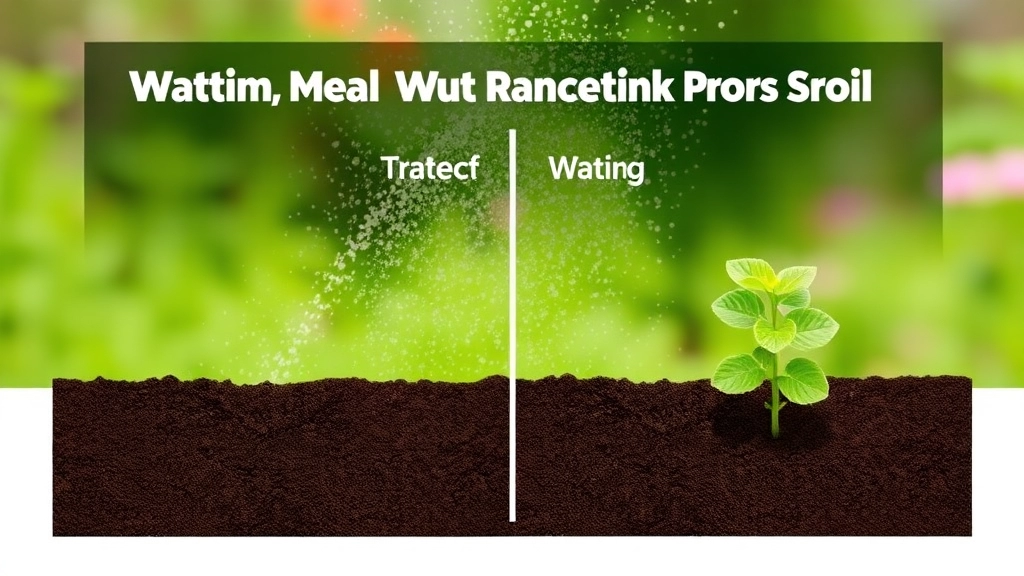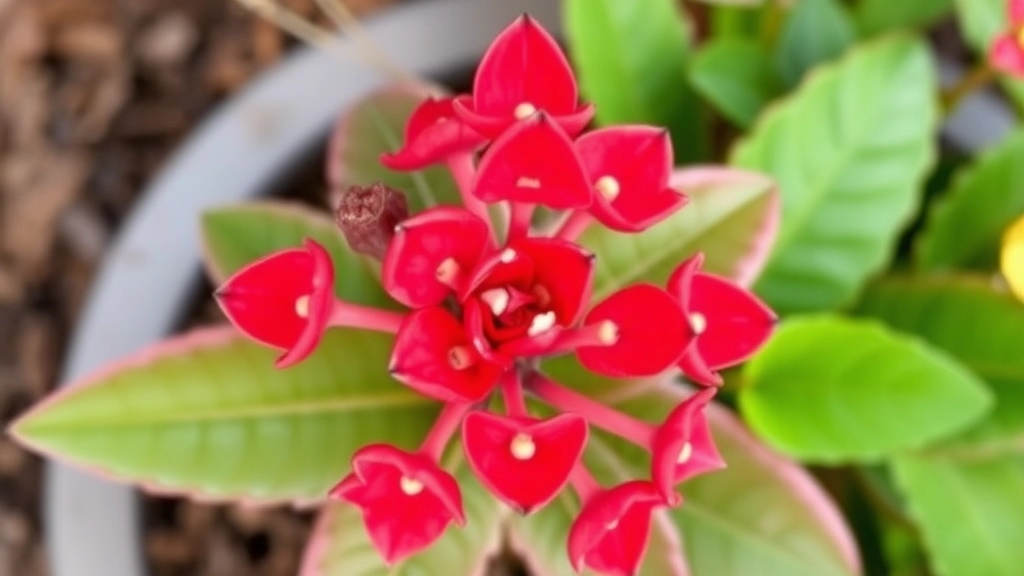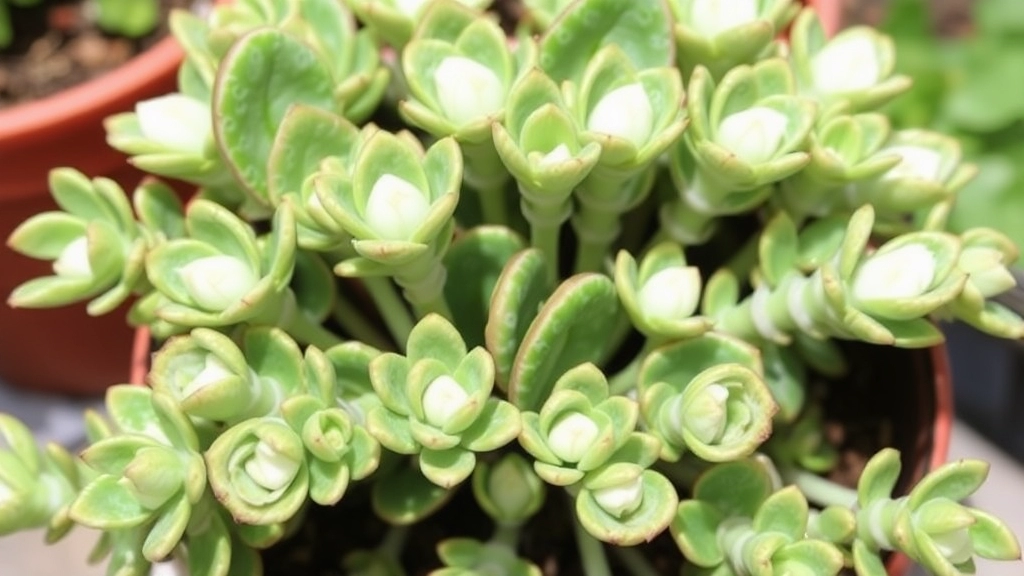Caring for Kalanchoe Hildebrandtii Silver Spoons
When it comes to caring for Kalanchoe Hildebrandtii Silver Spoons, understanding its optimal growing conditions is key. This striking succulent thrives in well-draining soil and requires bright, indirect sunlight to maintain its silver-grey leaves. Regular watering is essential, but be cautious not to overwater, as this can lead to root rot. By providing the right balance of light and moisture, you can ensure your Silver Spoons remains healthy and vibrant.
Propagation
Propagation of Kalanchoe Hildebrandtii Silver Spoons is straightforward, making it a favourite among succulent enthusiasts. The most effective method is through leaf cuttings, which should be allowed to callous over before planting in a suitable soil mix. This plant’s resilience and unique appearance make it a versatile addition to both indoor décor and outdoor landscaping. With proper care, your Silver Spoons can flourish and become a stunning focal point in any setting.
Optimal Growing Conditions for Kalanchoe Hildebrandtii
When considering the ideal environment for your Kalanchoe Hildebrandtii, or Silver Spoons succulent, you might wonder: What specific conditions will help it thrive?
This succulent is native to Madagascar and prefers a warm, bright atmosphere.
Watering and Soil Requirements for Healthy Growth

So, you’ve got your Kalanchoe Hildebrandtii, and you’re buzzing with excitement about its stunning silver leaves. But wait—how do you keep this beauty thriving?
Watering Tips
One of the biggest worries for succulent owners is watering. Too much or too little can spell disaster. Here’s what I’ve learned:
- Frequency: Water your Kalanchoe every 2-3 weeks. In the summer, you might need to up it a bit, but in winter, cut back significantly.
- Method: Always water deeply but let the soil dry out completely between watering sessions. This prevents root rot, which is a common issue.
- Signs of Thirst: If the leaves start to look wrinkled or shrivelled, it’s time for a drink. But if they’re mushy, you’ve probably overdone it!
Soil Requirements
Now, let’s talk soil. The right mix can make all the difference:
- Drainage: Kalanchoe Hildebrandtii loves well-draining soil. A cactus mix or a blend of potting soil and sand works wonders.
- pH Level: Aim for a slightly acidic to neutral pH (around 6.0 to 7.0). This helps your plant absorb nutrients effectively.
- Container Choice: Make sure your pot has drainage holes. This is key to preventing water from sitting at the bottom.
Why It Matters
Getting your watering and soil right is crucial for healthy growth. It sets the foundation for a vibrant, thriving plant.
Propagation Techniques for Silver Spoons Succulents
When it comes to expanding your collection of Kalanchoe Hildebrandtii, or Silver Spoons, propagation is a straightforward and rewarding process. You might wonder how to successfully propagate these unique succulents. Let’s delve into some effective techniques that will ensure your propagation efforts are fruitful.
Leaf Cuttings
One of the most popular methods for propagating Silver Spoons is through leaf cuttings. Here’s how you can do it:
- Select Healthy Leaves: Choose mature, healthy leaves from the parent plant. Avoid any that show signs of damage or disease.
- Cut with Precision: Use a clean, sharp knife or scissors to cut the leaves at the base.
- Let Them Callus: Place the cut leaves on a dry surface for a few days to allow the cut edges to callus. This step is crucial as it helps prevent rot when planted.
Soil Preparation
- Use Well-Draining Soil: A cactus or succulent mix is ideal. You can also create your own by mixing regular potting soil with sand or perlite.
- Potting: Once the leaves have callused, place them on top of the soil without burying them. The roots will develop from the base of the leaves.
Watering Techniques
- Initial Watering: After potting, wait about a week before watering to allow the cuttings to settle.
- Subsequent Watering: Water sparingly. The soil should dry out completely between watering sessions to prevent rot.
Stem Cuttings
Another effective propagation method is through stem cuttings:
- Choose a Healthy Stem: Look for a healthy stem with several leaves.
- Cut and Callus: Similar to leaf cuttings, cut the stem just below a leaf node and let it callus for a few days.
- Planting: Insert the cut end into well-draining soil, ensuring it stands upright.
Offsets
Kalanchoe Hildebrandtii can also produce offsets, or small plants that grow at the base of the parent plant:
Preventing Common Pests and Diseases in Kalanchoe Hildebrandtii

As we explore the care of Kalanchoe Hildebrandtii, it’s essential to discuss how to keep these beautiful plants healthy and thriving.
Understanding Common Pests
Kalanchoe Hildebrandtii, like many succulents, can be susceptible to various pests. Here are the most common culprits:
- Mealybugs: Tiny, white, cotton-like insects that can cluster on leaves.
- Aphids: Small, soft-bodied insects that can distort new growth.
- Spider Mites: Microscopic pests that create fine webs and can cause leaf discoloration.
Signs of Disease
In addition to pests, Kalanchoe Hildebrandtii can suffer from diseases, often linked to overwatering or poor air circulation. Watch for:
- Root Rot: Dark, mushy roots indicating excessive moisture.
- Leaf Spot: Brown or black spots on leaves, often due to fungal infections.
Preventative Measures
Taking proactive steps can help you avoid these issues:
- Inspect Regularly: Check your plants weekly for any signs of pests or disease.
- Maintain Good Airflow: Ensure your Kalanchoe is in a well-ventilated area to prevent fungal growth.
- Water Wisely: Allow the soil to dry out between waterings to avoid root rot.
- Use Natural Remedies: Consider neem oil or insecticidal soap for pest control, as these are less harmful to the plant.
Treatment Options
If you do encounter pests or diseases, here’s what you can do:
- Manual Removal: For mealybugs, gently wipe them off with a cotton swab dipped in alcohol.
- Repotting: If root rot occurs, remove the plant from its pot, trim affected roots, and repot in fresh soil.
- Fungicides: For leaf spot issues, a fungicide can help manage the problem.
Creative Uses in Landscaping and Indoor Décor
When considering how to incorporate Kalanchoe Hildebrandtii, commonly known as Silver Spoons, into your space, you might wonder about its versatility.
Outdoor Landscaping
Kalanchoe Hildebrandtii is not just a stunning addition to your indoor collection; it thrives beautifully in outdoor settings too. Here are some creative ways to use it in your garden:
- Rock Gardens: Its unique silver leaves make it a standout in rock gardens, providing a striking contrast against darker stones.
- Succulent Arrangements: Pair it with other succulents to create vibrant arrangements that require minimal maintenance.
- Borders and Edging: Use Silver Spoons as a border plant to define pathways or garden beds, adding a touch of elegance.
Indoor Décor
If you’re looking to enhance your indoor spaces, Kalanchoe Hildebrandtii offers numerous possibilities:
Seasonal Care and Pruning for Long-Term Maintenance
So, you’ve got your Kalanchoe Hildebrandtii thriving and looking fabulous. But how do you keep it that way throughout the seasons?
Seasonal Care Tips
Spring Awakening
As temperatures rise, your Silver Spoons will start growing like crazy.
- Fertilising: Use a balanced succulent fertiliser every 4-6 weeks.
- Repotting: If it’s outgrown its pot, now’s the time to move it to a slightly bigger one.
Summer Sunshine
These beauties love the sun, but too much can be a bit much.
- Shade: Provide some afternoon shade if the sun gets too harsh.
- Watering: Increase watering but ensure the soil dries out between sessions.
Autumn Adjustments
As the days get shorter, it’s time to prepare for the cooler months.
- Reduce Watering: Cut back on watering as growth slows down.
- Check for Pests: Give your plant a good once-over for any unwanted guests.
Winter Care
This is the time for your Kalanchoe to rest.
- Minimal Watering: Water only when the soil is completely dry.
- Temperature: Keep it in a warm spot, away from drafts and cold windows.
Pruning for Health
Pruning isn’t just about looks; it’s vital for keeping your plant healthy. Here’s how to do it:
- Remove Dead Leaves: Snip off any yellowing or shrivelled leaves.
- Shape Up: Trim back leggy growth to encourage bushiness.
- Timing: Best done in spring or early summer when the plant is actively growing.
By keeping these seasonal tips in mind, your Kalanchoe Hildebrandtii will not only survive but thrive! For more detailed advice, check out our ultimate guide to fuzzy kalanchoe care tips and learn about the complete care guide for Kalanchoe Flapjack.
FAQs on Kalanchoe Hildebrandtii Silver Spoons
How often should I water my Kalanchoe Hildebrandtii?
Water your Kalanchoe Hildebrandtii every 2-3 weeks. During the summer, you might need to water more frequently, but in the winter, cut back significantly. Always ensure the soil dries out completely between watering sessions to prevent root rot.
What type of soil is best for Kalanchoe Hildebrandtii?
Kalanchoe Hildebrandtii thrives in well-draining soil. A cactus mix or a blend of potting soil and sand is ideal. Ensure the pH level is slightly acidic to neutral (around 6.0 to 7.0) to help the plant absorb nutrients effectively.
What are the common pests that affect Kalanchoe Hildebrandtii?
Common pests include mealybugs, aphids, and spider mites. Mealybugs appear as tiny, white, cotton-like insects, aphids are small and soft-bodied, and spider mites create fine webs and can cause leaf discoloration.
How can I prevent diseases in my Kalanchoe Hildebrandtii?
To prevent diseases, ensure good airflow around your plant, inspect it regularly for signs of pests or disease, and allow the soil to dry out between waterings. Using natural remedies like neem oil or insecticidal soap can also help manage pests.
What should I do if my Kalanchoe Hildebrandtii has root rot?
If you notice root rot, remove the plant from its pot, trim the affected roots, and repot it in fresh, well-draining soil. This can help save the plant and encourage healthy growth.
How can I treat leaf spot on my Kalanchoe Hildebrandtii?
If your plant has leaf spots, which are often due to fungal infections, using a fungicide can help manage the problem. Ensure good ventilation and avoid overwatering to prevent future issues.
What are the signs that my Kalanchoe Hildebrandtii needs water?
If the leaves of your Kalanchoe Hildebrandtii start to look wrinkled or shriveled, it’s a sign that the plant needs water. However, if the leaves appear mushy, you may have overwatered it.
Why is it important to have drainage holes in the pot for my Kalanchoe Hildebrandtii?
Drainage holes in the pot are crucial to prevent water from sitting at the bottom, which can lead to root rot. They ensure that excess water can escape, keeping the soil well-drained and the roots healthy.
References
-
Kalanchoe Plant Care: How to Grow and Care for Kalanchoe
-
Common Kalanchoe Pests And Diseases
-
Kalanchoe Hildebrandtii: How to Grow and Care
